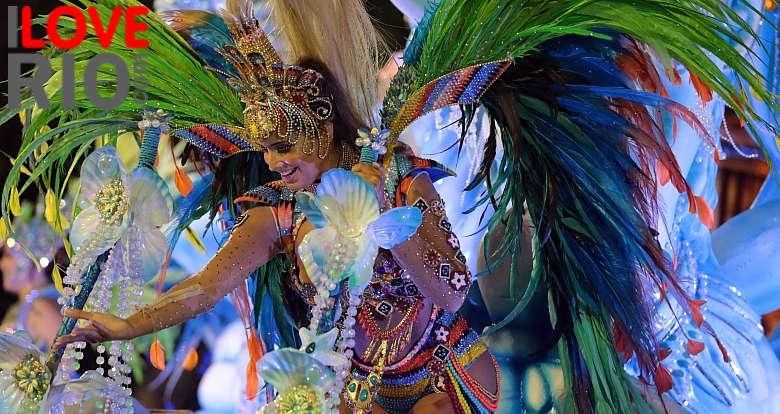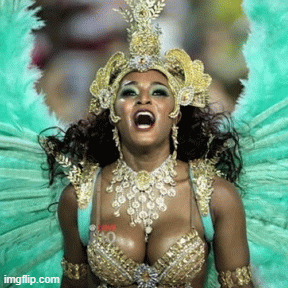Culture
I LOVE RIO is passionate about culture, and looks to cover the great wealth of artistic creativity that glitters across the city, in all its traditional and innovative forms and expressions.
Rio de Janeiro's repertoire of traditional culture is expounded, including film festivals, theatre productions, art exhibitions, and dance shows. Artistic manifestations from posh theatre productions to authentic favela treasures are showcased to readers, adding greater texture to the city's cultural portfolio.

CARIOCAS ARE THE SOUL OF RIO
'Culture' is an open and fluid term which refers to anything produced by the human intellect. It includes traditional art, such as film, theatre, dance and exhibitions, as well as everyday recreations which form the essence and character of a population. Rio de Janeiro is truly rich in heritages and diversity, combining creativity and input.
When Rio de Janeiro comes to mind, there are plenty of images: pristine beaches, soccer, carnival, barbequed meat, and the national drink "caipirinha" - yet, more than anything, it is the people of the city that make Rio what it is.
Called "Cariocas," rio's inhabitants form a very culturally diverse group, as they come from different heritages, cultures and creeds - with undeniable traits bonding the culture together: an overall good mood, love for life, friendliness, and warm hospitality.
Open and welcoming, Cariocas are the vital part of what makes Rio such a popular destination: gifted with a naturally optimistic attitude, people of Rio are uniquely distinguishable by their genuine smile, spontaneity and inquisitive nature.
Central to the overall Carioca culture is the vital role that family and friends play into one another's lives: birthdays are always celebrated surrounded by many friends and by the extended family, and any occasion is the perfect chance to get together and socialize. Sports, music, and the sunny outdoors are best enjoyed in the company of others, and week-end barbeques are a staple of local living.
Part of the local philosophy is the sincere interest in learning about ways and manners of other parts of the world, and incorporating many new elements in the local cultural landscape, giving birth to special Carioca expressions such as the musical genre Bossa Nova and a variety of gastronomic, artistic, and literary gems.
One aspect that lends Cariocas their distinct spirit is the tendency to incorporate influences from many different cultures in a charming and playful style.
Over the past century, the laid back atmosphere, beautiful scenery and open-hearted people of Rio have acted as 'muse' for great authors, poets, and composers such as Tom Jobin and Vinicius de Moraes, creators of the landmark Bossa Nova song 'Garota de Ipanema' (Girl from Ipanema).
These same aspects of the city have attracted some of the most talented artists from around the world, and a great influx of human capital has instigated phenomenal developments in the cultural produce of the city.
The most famous and internationally visible expression of Carioca culture is the truly spectacular Carnival celebration that takes place every year: thousands of residents marching in unison parading very sophisticated costumes at the sound of Samba music.
World famous around the world for decades, Carnival in Rio is a truly wild and spectacular five-day celebration, involving millions of people, and permeating every corner of the city, day and night. Held 40 days before Easter, Carnival officially begins on Friday and ends of fat Tuesday. However, pre-Carnival celebrations start at least one week in advance, and continue until the Sunday after fat Tuesday.
Carnival in Rio de Janeiro dates back to the 17th century, when the Portuguese nobility held parties and celebrations based on their noble European traditions. Over time, these celebrations absorbed elements specific to Indigenous and African culture, and culminated in a unique and highly spectacular blend deeply influenced by Afro-Brazilian folklore.
Beyond Carnival, in Rio de Janeiro a vast array of artistic and everyday expressions glitter across the city every day of the year, often inspired by the city itself and the presence of countless artists, writers, and musicians.
Especially important in Rio de Janeiro, Bookstores pepper the streets of the city, hosting a wide array of important artistic events, such as book launches, readings, recitals and discussions. They are spaces of mingling, where everyday people, artists, and intellectuals meet and share ideas, and where literature and art blend with coffee, food, music, leisure and debate.
Rio has also developed acclaim over the past decades for its contribution to the world of visual arts. This is partly due to public and private investment in galleries and exhibitions across the city: the Museu de Arte do Rio (Rio Art Museum) was inaugurated in 2013, and hosts delightful exhibitions and events throughout the year. The Museu de Arte Moderna (Museum of Modern Art), as well as the Centro Cultural Banco do Brasil (Bank of Brazil Cultural Center), also offer a program of internationally recognized exhibitions.
Another aspect of Rio's cultural repertoire is its theatre. The "Teatro Municipal," or Municipal Theatre, is one of the most striking buildings in the city. Built in the baroque style in Cinelandia in 1909, it primarily exhibits classical concerts, operas and ballets, as well as some musical theatre. The OI Institute has also set up two theatres in the neighborhoods of Flamengo and Ipanema, running a wealth of different artistic performances, providing an extensive program of theatre for young and old audiences.
The city's culture can also be defined as the everyday activities and mannerisms of its people. Graffiti art, skateboarding, fishing and kite flying are key components of contemporary Carioca life, along while certain expressions, gestures, tastes and tendencies form the shared fabric of a rich and unified society.
The "Jeito Carioca," or Carioca way, is a famous term used to denote the creative, positive and ingenious way that the people of Rio approach obstacles and adversity.
These characteristics emerge as much from the affluent areas of the city as they do from the communities atop Rio's hills. Favelas have long, varied and vibrant histories and traditions which continue to have a hugely influential role in the formation of the city's essential character.
Increased development and investment in the city have led to the creation of events that have unquestionably advanced literature, film and art on the global stage, and expanded access to culture amongst Rio's inhabitants.
The "Festival of Rio," which began in 1999, is one of the most important film festivals in the world and has showcased some of the greatest talent in direction, including Costa Gavras, João Pedro Rodrigues, and world-famous actors such as Samuel L. Jackson, Jeremy Irons and Helel Mirren.
The city hosts an international book fair, where publishers, booksellers, authors, connoisseurs, and enthusiasts gather to discover and discuss literature, offering a space for provocative and fruitful communication between intellectuals and the wider public.
Each year, Rio holds Anima Mundi, an animation film festival screening ground-breaking and engaging animated motion pictures from across the globe. Recognized by the international academy of the OSCARs, it is the biggest animation event in Latin America, acting as a platform for the newest and most original artists in the field.
For one weekend each winter, painters, sculptors and visual artists throw open the doors of their homes and studios in the creative heartland of the city - the beautiful and bohemian hillside neighborhood of Santa Teresa – for an event called Arte de Portas Abertas (Open Doors Art).
Since 2003, Rio de Janeiro State has hosted the highly prestigious FLIP festival in the charming and historic town of Paraty. The International Festival of Literature has brought together some of the best-loved and critically acclaimed contemporary writers, including Julian Barnes, Don DeLillo and Hanif Kureishi.
Highlighting the religious aspect of Rio de Janeiro's culture, the iconic statue of Christ the Redeemer looms majestically over the city, symbolizing and testifying to the deep rooted connection between Cariocas and the Christian faith - portrayed with wide open arms, the monument reminds all visitors of the welcoming nature of the city and its people.
Brazil is a very religious country, and because of the diversity of its population, often religions incorporate influences from Catholicism, Protestantism, Paganism, European Spiritism, Indigenous beliefs and African religions and rituals - highlighting the exemplary openness and cultural integration of both Rio de Janeiro and of the country as a whole.
The two most predominant influences on the population's faith are European Christianity, and the sacraments and customs that migrated to the country along with the African slaves. Until the mid-20th Century over 90% of Brazilians were Catholic, making the country the largest Catholic country in the world, with a rapid growth in Evangelical Protestantism over the last 50 years.
Religious holidays and festivities take place throughout the year in homage to saints and sacred dates of great importance in Brazilian folkloric and Catholic history. All throughout June, July and parts of August, Rio plays host to a wide range of outdoor and indoor parties in honor of important saints, imbuing the Catholic celebrations with traditional Brazilian and Afro-Brazilian music and cuisine, such as Forró music and a variety of traditional national dishes.


